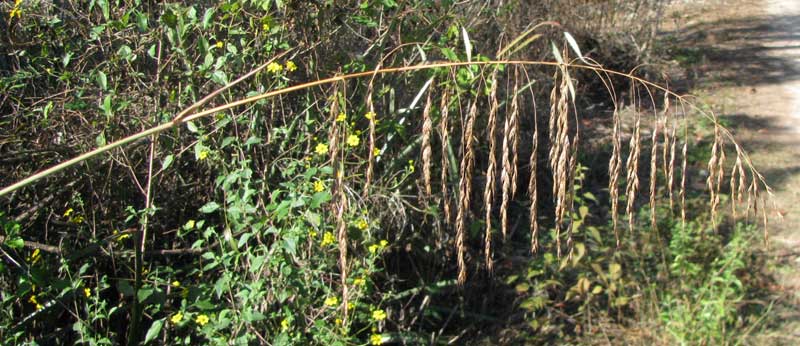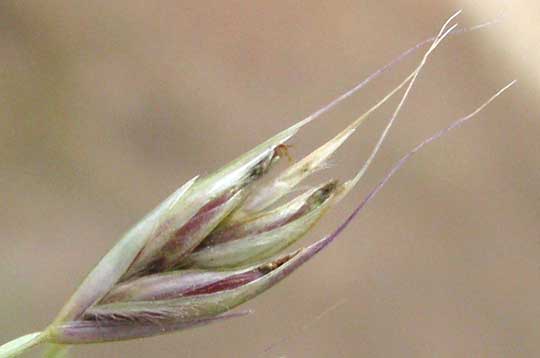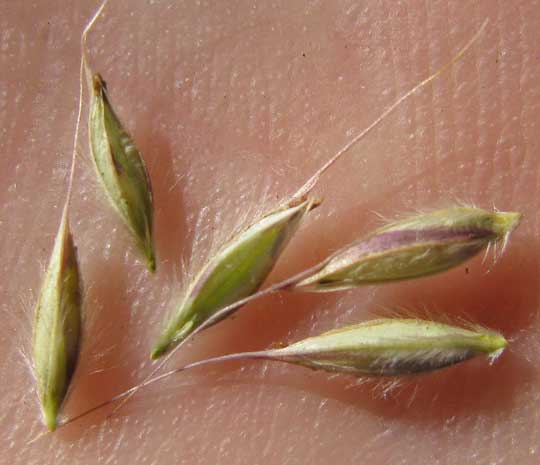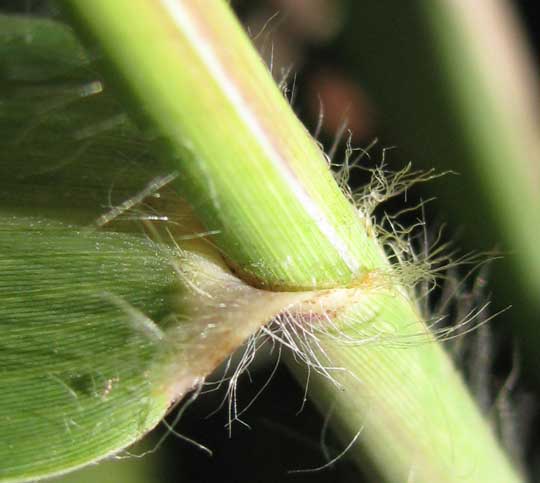Excerpts from Jim Conrad's
Naturalist Newsletter

from the January 23, 2011 Newsletter issued from Hacienda Chichen Resort beside Chichén Itzá Ruins, central Yucatán, MÉXICO; limestone bedrock, elevation ~39m (~128ft), ~N20.676°, ~W88.569°
ALMOST FESCUE
Lately a certain grass species has been challenging me. It's six feet tall (2m) and it hangs itself across forest trails and leans out of forest edges so that it's hard to ignore. You can see a typical panicle of it above.
In grasses, the structure analogous to a flower in regular plants is the spikelet. This grass's spikelet, containing about four awned "florets," is shown below:

Those florets are analogous to the multiple pistils of certain flowers, such as those of buttercups and magnolias. Some individual florets are shown below:

Often features of where a grass's blade connects with the stem are useful in grass identification, so a picture of that part of this grass, is shown below:

If you're familiar with temperate-zone grasses you'll understand why when I tried to key out this grass I always ended up with the big genus Festuca, or fescue grass. However, when I went looking for fescues living in the Yucatán, the few of them listed didn't fit. Anyway, fescues are mainly temperate-zone grasses.
It took me awhile to figure out that our mystery grass is an uncommonly occurring genus, or at least one seldom documented, restricted to tropical America. It's the genus GOUINIA, which I'd never heard of. There's not enough info on the internet for me to figure out which species it is, though it well might be Gouinia virgata.
I'll park the pictures in the Newsletter archives and let a future agrostologist Google them up and write to me about them.